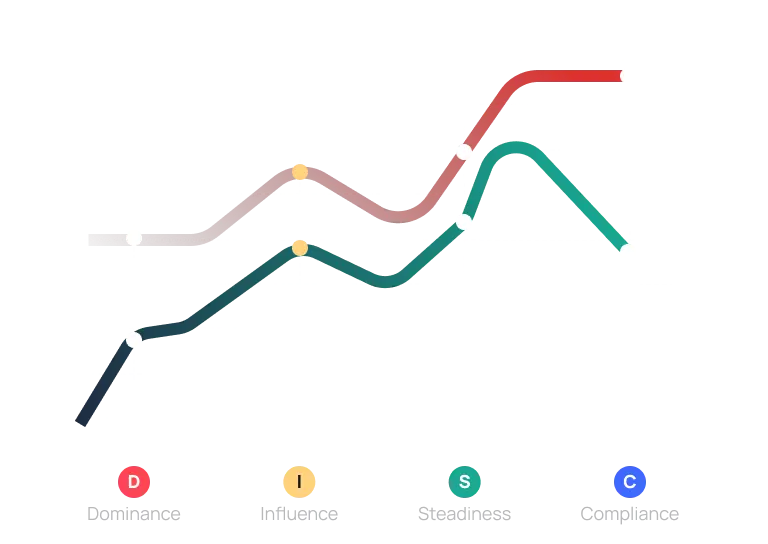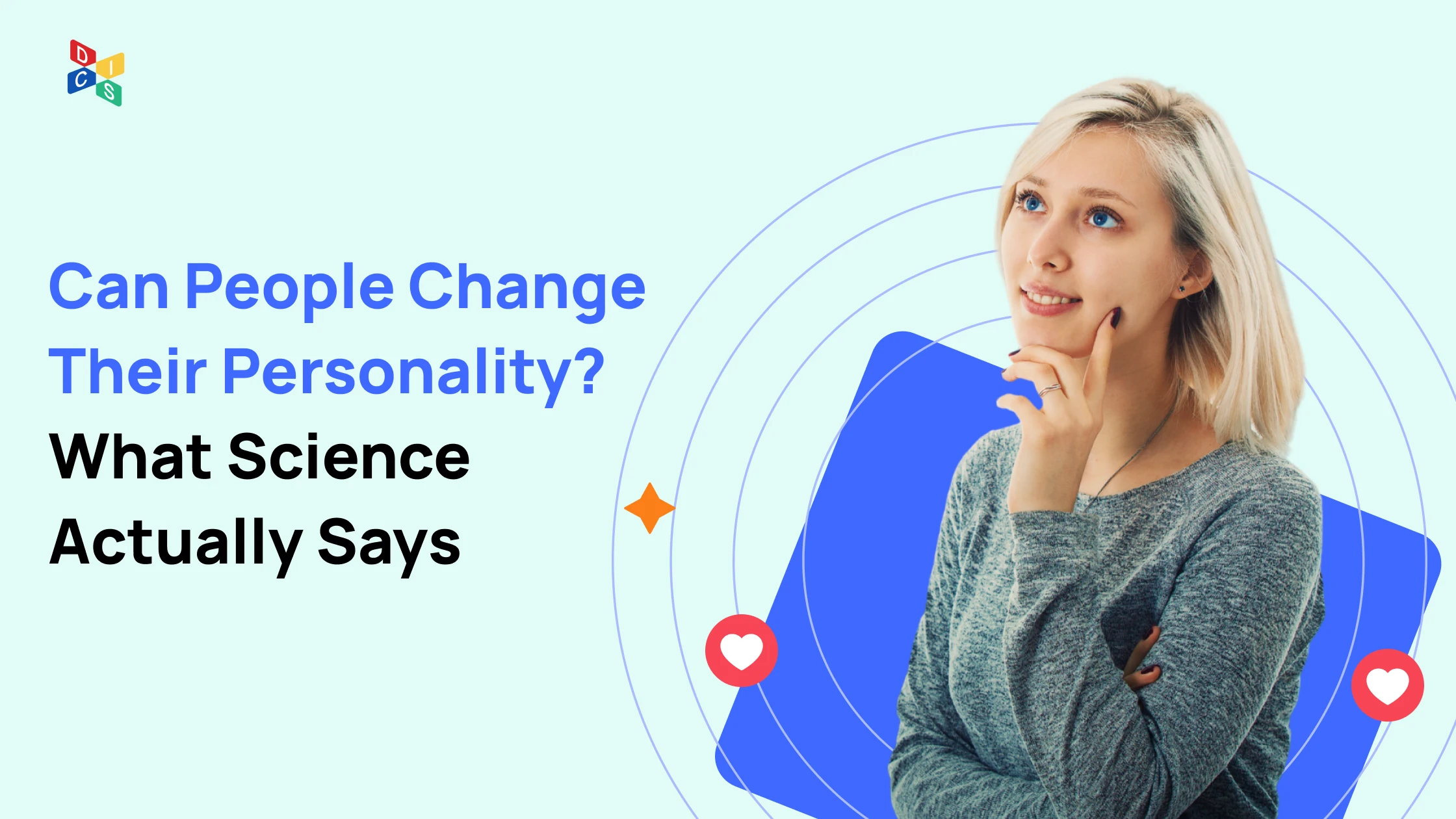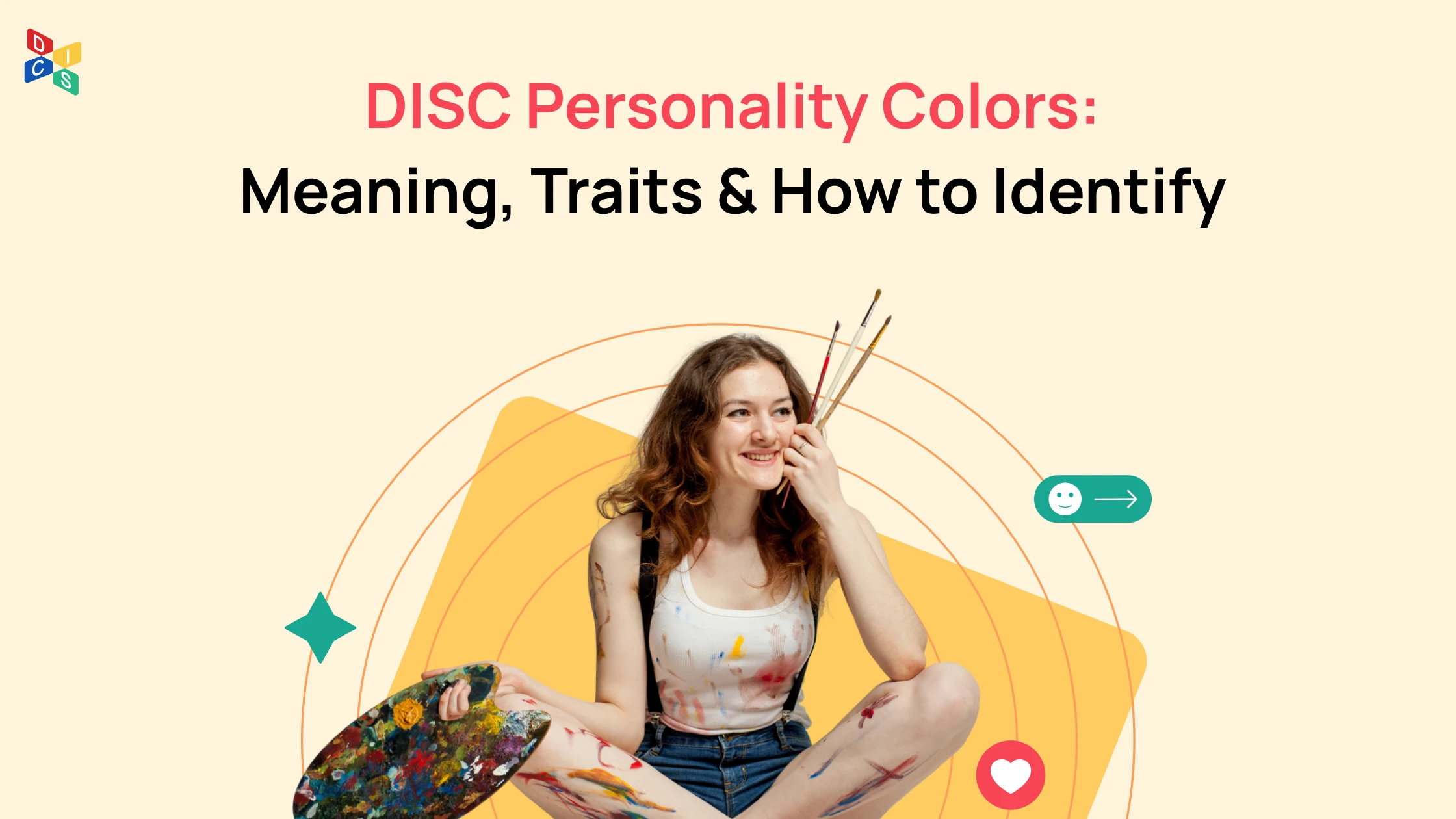Table of content
All About DISC Model: How To Read And Apply In Human Resource Management
Do you want to "read" anyone's personality and understand your team better? The DISC model in this article will help you answer all those questions.
Have you ever struggled to understand yourself or the people around you? Do you want to unlock the secrets of personality and build better relationships? And if you have some free time but don’t know where to start— a DISC model might be your perfect guide.
So, what is a DISC model? What does its chart indicate?
Explore the personality chart below – your all-in-one key to understanding and reading anyone with ease!
Overview Of The DISC Personality Chart
DISC chart is a well-known tool that helps you understand yourself and other people. It’s based on the DISC model, which shows how much you match four main personality types.
DISC and four quadrants
- Dominance (D): Decisive, strong-willed, likes to lead and stay in control.
- Influence (I): Outgoing, social, enthusiastic, and persuasive.
- Steadiness (S): Stable, patient, careful, and loyal.
- Compliance (C): Detail-oriented, thoughtful, rule-following, and quality-focused.
The DISC results are shown in two main lines: (1) Natural and (2) Adaptive. The high and low points of these lines reflect personality traits across the four DISC assessment types. From there, it provides insights into your behavior and core personality.
Learning how to read a DISC chart accurately is a valuable skill that can benefit you in many areas. It helps with personal growth, career planning, and understanding others. Thus, you can take the DISC model free test for yourself or your team. With the available results, you will also see a clear and accurate chart for in-depth self-discovery.
How To Read The DISC Assessment Chart Accurately
Reading a DISC chart can be challenging for someone new to the DISC model and concepts. But, the more you work with it, the more insights you’ll gain—and the better you can apply them to your job and career. To get started, focus on these two key lines in the DISC chart.
Adaptive DISC chart
The first chart you should look at in a DISC report is the Adaptive one. This chart is based on the “Most Like Me” answers you selected during the test. It shows how someone believes they are expected to behave in a specific environment. In other words, the Adaptive chart reflects your “outer layer,” which may not fully represent your true self. That’s why this line is the most likely to change over time.
Want to know how you adapt to the world around you? Take a DISC personality test now and see your own Adaptive chart.
Natural DISC chart
This chart is based on the “Least Like Me” answers from your DISC assessment. It often reflects a person’s core behaviors or how they act under stress. This chart is the least likely to change because it represents deep-rooted responses learned from past life experiences. Sometimes, it’s called the “stress chart” because people tend to return to their natural behavior when under pressure.
Worried that your Adaptive and Natural charts are significantly different? - It’s actually normal for personality traits to shift and grow over time as you gain new experiences. That’s why it’s helpful to reassess the DISC model test free regularly. The chart not only supports personal growth but also plays a key role in team management and HR development.
Applying The DISC Model In Human Resource Management
DISC is a popular personality assessment tool widely used in human resource management. It offers several practical benefits, including the following:
Understanding your employees
Thanks to the DISC model, managers gain access to a detailed "personality map" of each employee. From there, managers can assess the attributes and working styles of each employee.
More than that, DISC is a powerful tool for building strong and effective teams. It ensures the right people for the right roles where they can use their strengths to the max. Managers can also create an ideal team environment with mutual respect and understanding. Then, as the time passes, a shared goal is more easily achieved with a healthy workplace.
Find out: DiSC Test C Personality: Characteristics, Strengths, and Challenges
Improving recruitment effectiveness
“The greatest asset of any business is its people.” – Matsushita Kōnosuke
That’s why DISC plays an important role in building and developing a company’s most valuable asset—its people. By understanding a candidate’s personality and strengths, employers can assess how well they fit the job requirements. This makes for faster, more accurate hiring decisions and achieves the goal of placing the right person in the right job at the right time.
Developing Suitable Training Programs
The DISC chart helps managers understand each employee’s strengths, work style, and expectations. With this information, they can create training programs that match different learning preferences. When training is personalized, it becomes more effective—helping employees gain the right skills and knowledge more easily.
Conclusion
Discpersonalities.com hopes that DISC model knowledge shared above will help both individuals and managers better understand those around them. By applying this knowledge, you can build stronger relationships, improve work performance, and achieve success in all areas of life.
We also offer many other helpful articles and resources about the DISC personality test and related personality topics. Visit discpersonalities.com to explore more!


Don't Let Your Potential Stay Hidden!
Take the DISC test today and discover your unique 'YOU', with deep insights into your true personality and potential.

Represents your instinctive behaviors and desires.
Shows the behavioral tendencies you think you should exhibit in specific situations.
Related articles
You may also be interested in
 DISCDec 19, 2025
DISCDec 19, 2025What DISC Style Is Best for Leadership? A Situational Leadership Guide
Uncover what DISC style is best for leadership and how each personality type can shape your leadership approach. Maximize your strengths for team success.
 DISCDec 10, 2025
DISCDec 10, 2025Can People Change Their Personality? What Science Actually Says
Can people change their personality? Explore what science says about personality change and learn the key factors that shape how traits evolve over time.
 DISCDec 10, 2025
DISCDec 10, 2025DISC Personality Colors: Meaning, Traits & How to Identify Your Style
Explore the meaning of DISC personality colors and the traits behind each style. Learn how to identify your profile to improve communication and teamwork.
